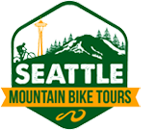by Guide Nate Summers
I think I’ve shared with many of you my enjoyment, wonder, and awe of spending time near the volcanoes of the Pacific Northwest this summer. These massive snow-clad peaks dominate the summer skyline, and ironically while they represent the possibility of great destruction, they also in my mind give us clear indicators of hope: for both us and nature.
Mount St. Helens (the picture above was taken in early June) is a great example of what I’m talking about. As I’ve mentioned before, then entire area picture above looked like “the surface of the moon” forty years ago. Recently, I’ve met with people who saw the landscape right after the eruption and who are now returning. They can’t believe there are entire forests now, wildflowers everywhere, and an abundance of wildlife including bears, marmots, golden-mantled ground squirrels, hummingbirds, elk, mountain goats, fish, frogs, and lots of butterflies.
How did the landscape return to such vitality and abundance? It rejuvenated and revitalized itself because humans were required to leave it alone.
That’s right, people weren’t allowed to do any restoration and the land was brought back to life by the animals, plants, insects, and natural processes of the area. Scientists were astounded at how quickly the land recovered and were tasked with studying how it happened.
Major contributors were burrowing animals, elk tracks, and the power of wind…let me explain more.
After the massive, devastating eruption trees were torn apart, all the vegetation was killed, and large numbers of animals were killed outright for dozens of miles. However, many burrowing animals such as mice, ground squirrels, chipmunks, and marmots made it through the eruption because they were in their tunnels at the time of the eruption. As they emerged, the landscape was barren and covered with feet of ash. Thankfully, an elk herd from the south side of the mountain wandered over.
The herd of elk broke up the uniform, hard ashy surface with their thick, dense hoofs and they brought the seeds of vegetation with them in the form of their fresh droppings. The burrowing animals quickly grabbed these and distributed them through out the land. The elks breaking up the surface and the burrowing animals spreading seeds combined with the wind quickly distributed wildflower, tree, and other plant seeds through the area. When rains returned, fireweed, alder, and other plant “first responders” sprouted and began the process of reforestation…
Now, when you visit the mountain and the surrounding area it’s stunning to see the healing process that has happened within one generation. However, ironically outside the blast zone and the crater area the forest and land has still been continued to be logged and managed by humans. So, you have an island of rewilded landscape surrounded by a sea of still heavily exploited land that is characterized by mono-crop extractive forestry.
I believe if we could reverse the above trend and have much large patches of naturally rewilded seas with islands of human management and use we would see huge returns of benefit for the biosphere, the climate, and for humans as well.
Hopefully, this experiment in leaving nature alone and allowing it to restore itself can serve as a beacon of knowledge and wisdom as we all turn towards rewilding the planet and our lives.





